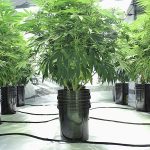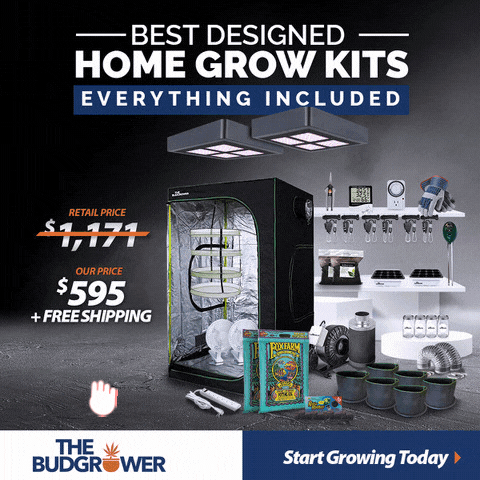In every market stall, grocery, restaurant, or home you visit, one food item that you will always find on the shelves is tomatoes. Growing tomatoes dates back to the 17th century, and the practice keeps getting better with different varieties of the crop gracing gardens worldwide. The tomato, which is both a vegetable and a fruit, grows well both indoors and outdoors.
Growing the crop outdoors on soil media has its disadvantages, especially during the cold winter months. Tomatoes do not do well in the cold due to frost and other unfavorable weather conditions. However, growing them hydroponically will ensure a constant supply of tomatoes all year round. Growing tomatoes hydroponically is one of the most favorable and reliable gardening methods that comes with immense benefits.
In this article, we take you through the journey of everything you need to know about hydroponic tomatoes which includes how to grow them, different varieties and the best hydroponic growing systems in the market today.
Before touching on how to grow hydroponic tomatoes, here is a brief explanation of what hydroponics is for those that are not familiar with the gardening method.
So, What Is Hydroponics?
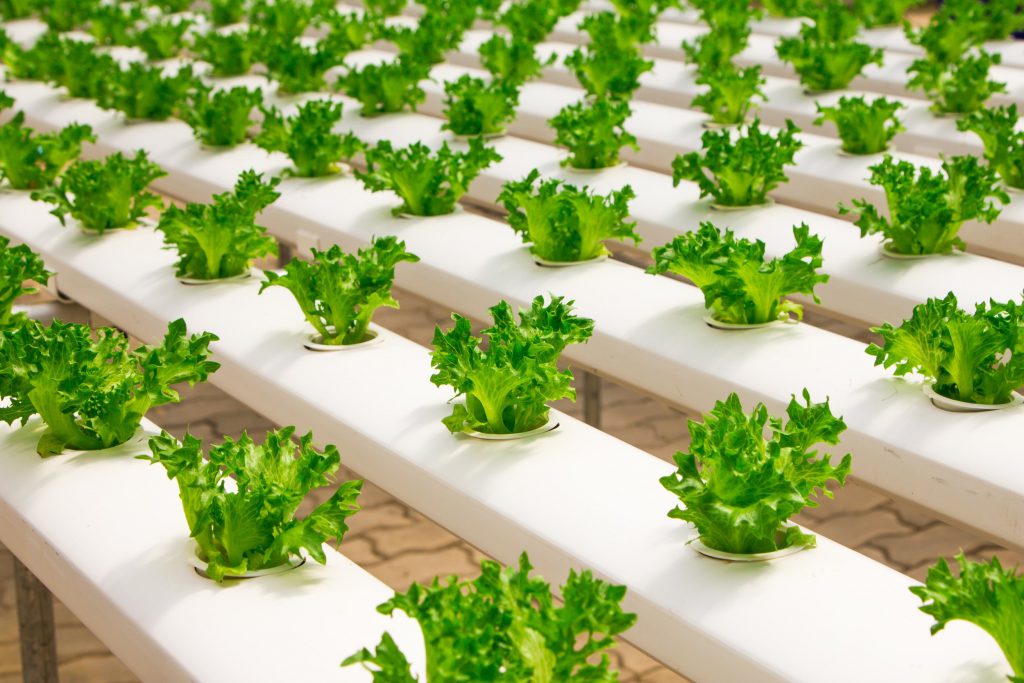
Hydroponics is a style of gardening that does not use soil as a growing medium. Growing crops hydroponically involves applying a concentrated nutrient solution directly to the roots of the plants. You can use inert media such as clay pebbles or coco to anchor the roots during the growth process. The different types of hydroponic methods are ebb and flow, deep water culture (DWC), Hydroponic dip, aeroponics, and nutrient film technique.
How to Grow Hydroponic Tomatoes
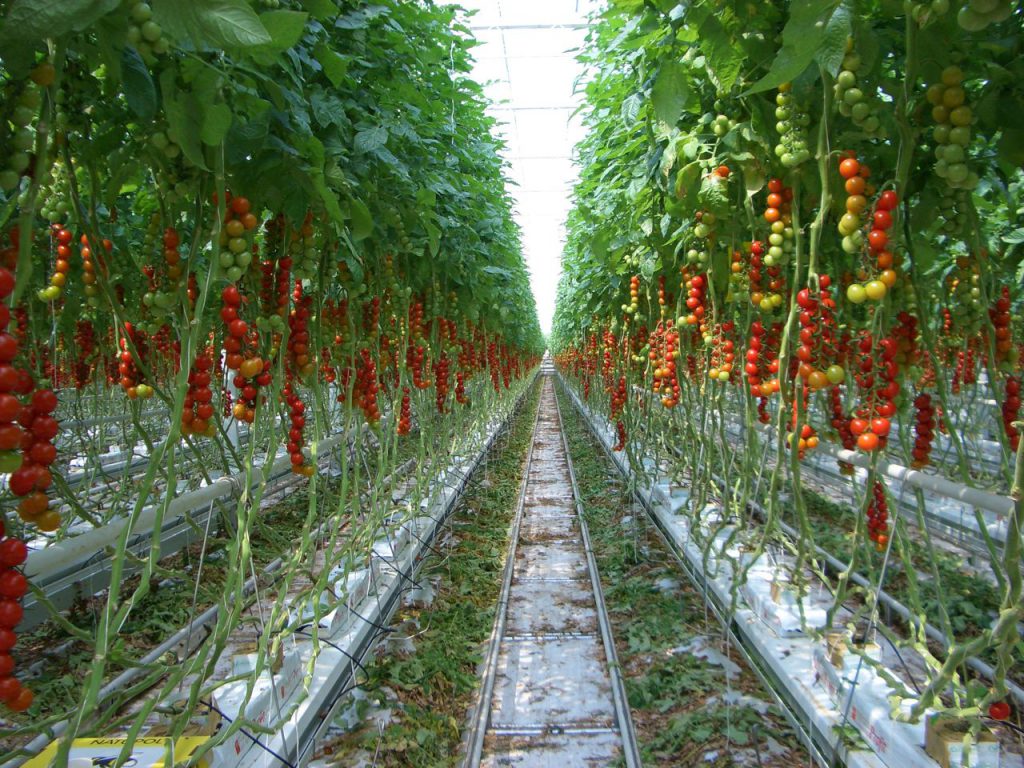
Hydroponic tomatoes are healthy and vibrant crops, and growing them is not as hard as some people think. Hydroponic tomatoes gardening allow you to do it indoors with the help of grow lights; in greenhouses, or outdoors. Though hydroponic tomatoes may require more attention and costs than growing the same in a soil medium, the results are worth the patience. Let us get down to what you need for your hydroponic tomatoes gardening process.
Where To Begin
Seeds
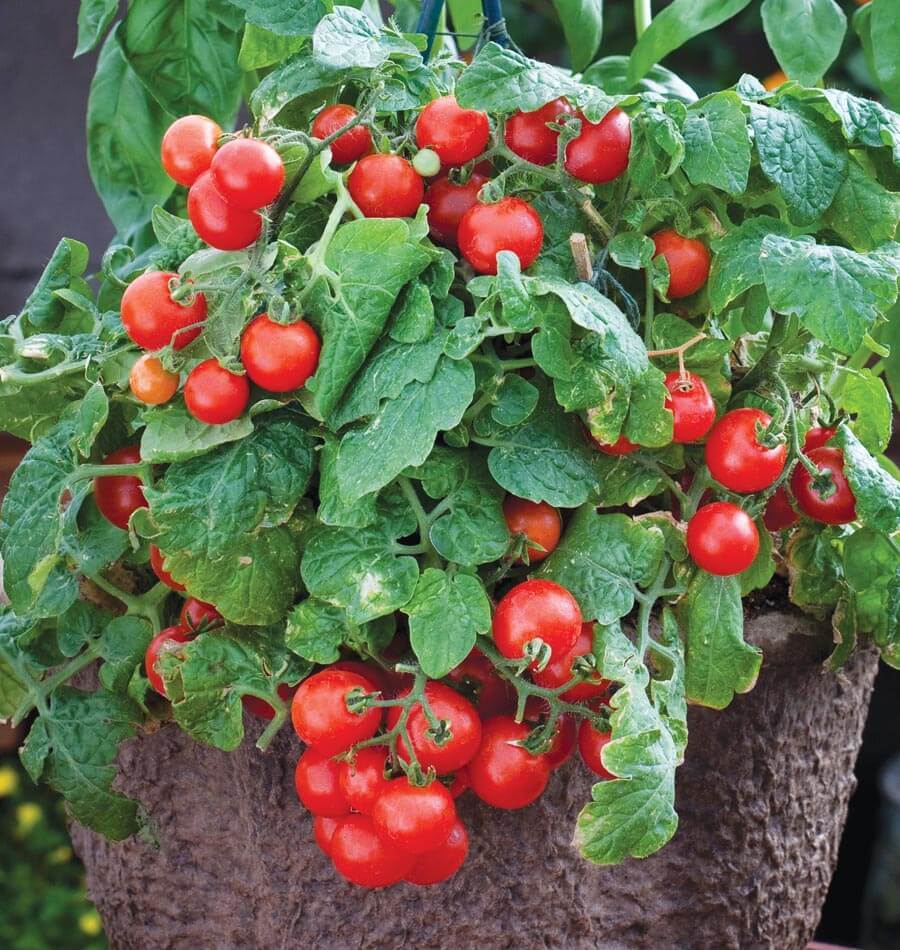
Whether growing hydroponically or in the soil, each plant starts its growth process from seeds or saplings. Hydroponic tomatoes are not different. However, hydroponic gardening does better with saplings than it does with seeds. It does not mean that you cannot grow the tomatoes from seeds, but they take longer to germinate than saplings do.
To germinate the saplings or seeds, you will need a pH test kit, Rockwool, and a tray. Germinate the sapling on the tray with a mixture of water that has a pH of 4.5 and Rockwool. After the seeds germinate, transfer the seedlings to your hydroponic method of growing.
Hydroponic Tomato Varieties
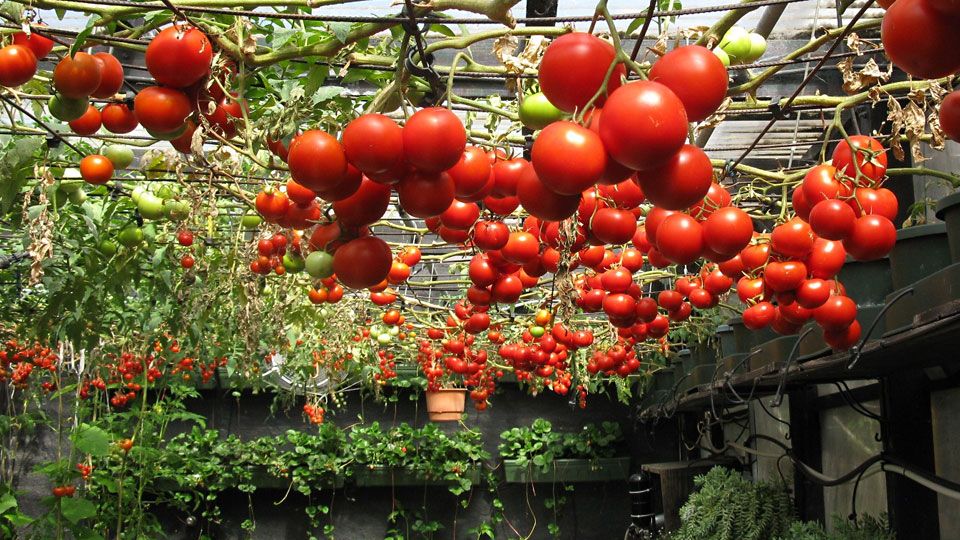
Selecting the best hydroponic tomato varieties is not an easy process especially for first time hydroponic tomato gardeners, considering that there are many different types to choose. All tomato varieties are vine plants that come as either determinate or indeterminate. Determinate varieties are bushy and sprawl along the ground, indeterminate grow vertically and need support and pruning. Hydroponic tomato growers prefer the determinate variety because they grow up to a set height of between two and four feet.
Some of the most popular hydroponic tomato varieties are-
- Hybrid types such as Trust, which is a favorite with many people because of its resistant to mold and root rot, Giant Beefsteak, and Daniela that comes with a long shelf life.
- Open-pollinated or Heirloom varieties such as moskvich, and Thessaloniki
- Specialty varieties that include Plum and Italian varieties such as San Marzano, Azafram, and Fresh Paste, olive, pear, currant, and grape-shaped small-fruited tomatoes, and sun gold.
- Cocktail miniature and cherry varieties of cherita, flavorita, sweet 100, and gardeners delight are also great hydroponic tomatoes.
Tomato Light
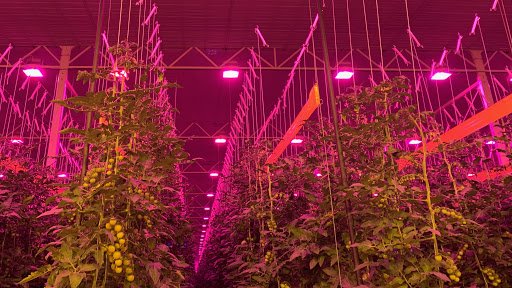
Light affects the quality and size of tomatoes, which is why they thrive better during summer than they do during the cold winter seasons. Tomatoes need at least 8 to 10 hours of lighting each day for a high level of photosynthesis to take place. Some of the more significant yielding varieties need even up to 18 hours of light each day.
Once they reach maturity, tomatoes need respiration, which they get from eight hours of darkness. If you want to maximize fruit production, you should ensure that you give the tomatoes at least 16 hours of light each day. The best light outputs for tomatoes are metal halides. LEDs and CFLs are also good options though they do not provide the same output as metal halides do.
[amazon bestseller=”metal halides grow lights”]Temperatures
Tomatoes are warm-weather crops, and they thrive better in day temperatures ranging from 65 to 77 or 55 to 85 degrees Fahrenheit. During the night, tomatoes thrive well in lower temperatures of between 12 and 18 degrees Celsius. Temperatures higher than 90 degrees F or lower than 50 degrees F are not ideal for the healthy growth of tomatoes.
Hydroponic tomatoes growing in grow tents thrive because it is easier to control the temperatures here than it is to control the same in other places such as outdoors, where you have to deal with other environmental issues.
Nutrient, pH, and EC Requirements
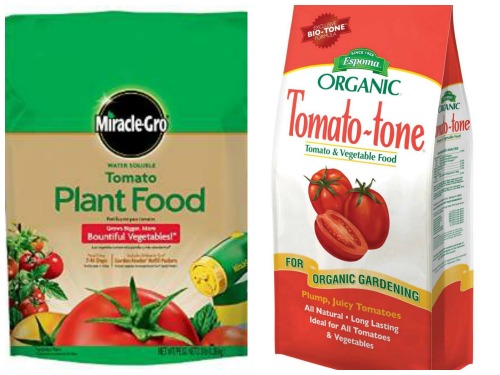
Tomatoes require high levels of nitrogen, potassium, phosphorous and different elements of nutrients for high quality and high yields. You can choose to buy two-part nutrient mixtures designed explicitly for hydroponic tomatoes from some of the top brands, or mix your plant nutrients. They thrive well in above the average pH levels.
The best pH for hydroponic tomatoes is between 5.8 and 6.3. The correct mix of nutrients also provides adequate EC levels for tomatoes. Levels of between 2.0 and 3.5 milliMhos are good enough for hydroponic tomatoes. If by any chance, your tomatoes do not receive adequate nutrients EC or pH, the plants will display yellowing of leaves, curled leaf tips, red stems, and early falling of flowers.
[amazon bestseller=”tomato fertilizer”]Growing Media
The right growing medium helps to deliver high yields of tomatoes. Hydroponic tomato growing provides you with several techniques to choose from if you want to maximize the yields. Some of the most popular hydroponics tomatoes gardening techniques are coco coir, DWC, NFT, clay pellets, drip systems, Rockwool, and perlite.
Best Hydroponic Systems for Tomatoes
Hydroponic tomatoes do well with different hydroponic systems. When using any of the techniques, you need to take into account that tomatoes are heavy feeders and require high maintenance levels. In their fruiting stage, tomatoes use large amounts of micronutrients and potassium, which means if you use a recirculating method, you may end up altering the pH levels.
Even if you decide to use the more friendly passive growing systems, you still need to monitor water levels closely for proper maintenance of pH levels, failure to which you will have to deal with deficiencies. The best hydroponic systems for tomatoes are:
Nutrient Film Technique
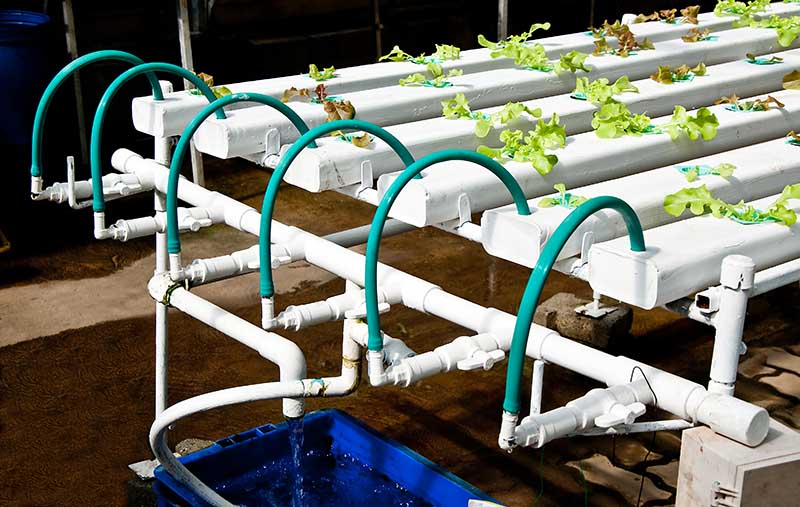
Nutrient film technique or NFT is a simple and effective hydroponic growing technique that uses a water pump to provide the tomatoes with nutrients, the system has two main components, which are the reservoir and a grow tray. The grow tray has net pots that contain the grow media such as Rockwool that helps to hold the roots and preserve the nutrients.
A pump from the water reservoir delivers a nutrient solution to the grow tray, and it comes with a drainage pipe for recycling any solution of unused water nutrient. The size of the reservoir depends on the number of tomatoes that you intend to grow. If you are growing 40 to 50 hydroponic tomatoes, you need a 5-gallon capacity reservoir. It also comes with an easy setup, which is friendly even for first-time gardeners.
Deep Flow Technique
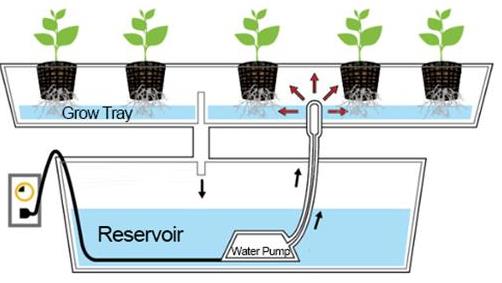
Deep flow technique (DFT) is another hydroponic tomatoes growing method popular with many growers. The method is very similar to NFT except for the deeper trays, and the method does not rely on a water pump to relay nutrients to the roots. The method uses Styrofoam boards that suspend the plants so they can float on the surface.
DFT trays hold more water, which helps to keep the tomatoes alive without the need of a pump. The system uses aerated water to prevent drowning of the plants.
Drip System
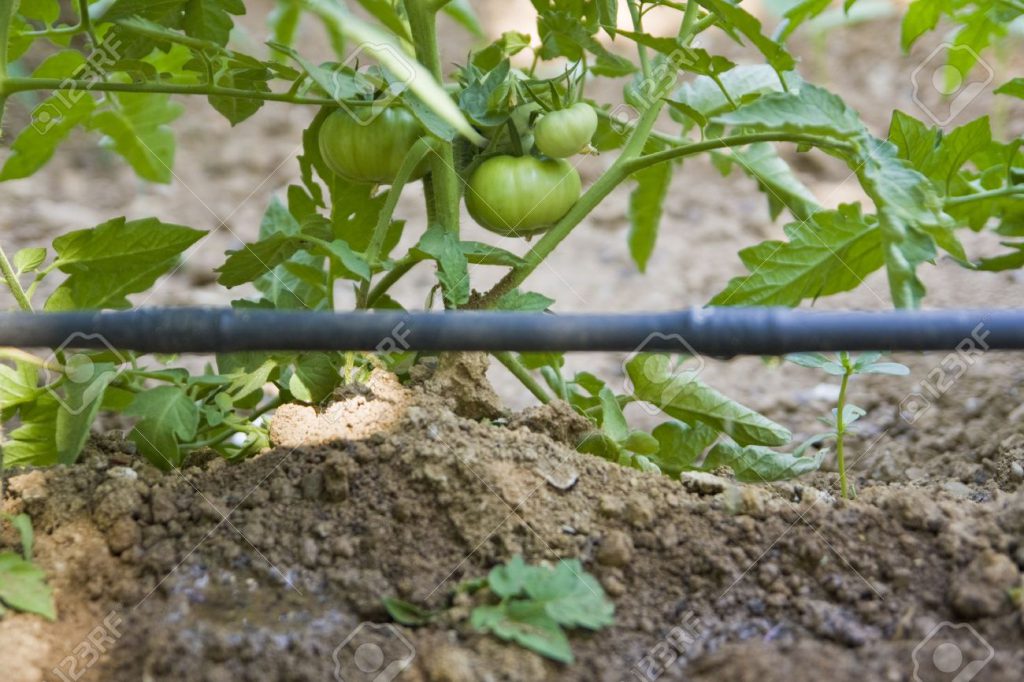
The hydroponic drip system is another popular growing technique that feeds the plants with water and nutrients using a pump. The drip system’s emitters supply nutrient solutions to the tomato roots directly. The system helps to conserve water, making it one of the best choices for commercial hydroponic tomato growers.
Ebb-and-Flow
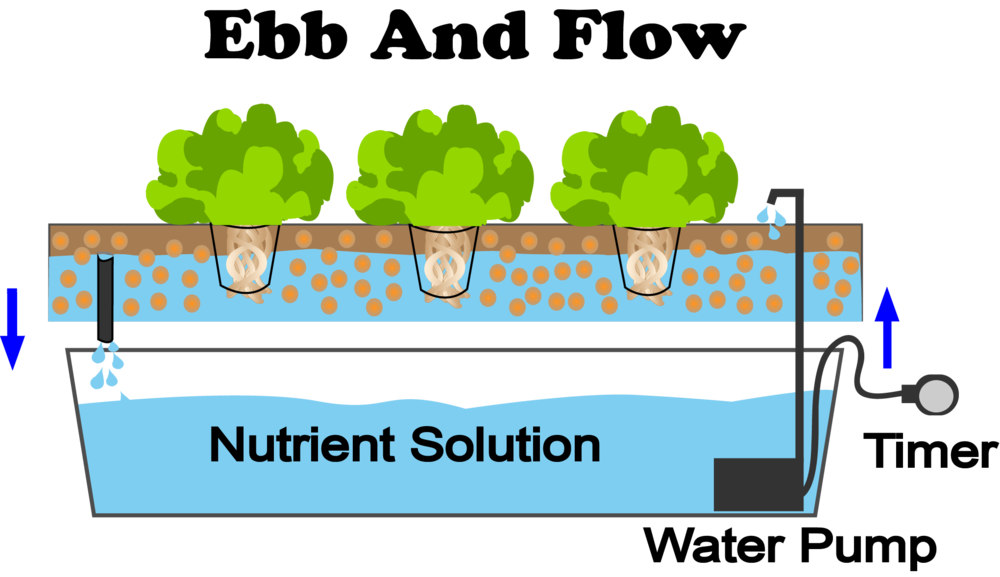
Ebb and flow or flood and drain method, is one of the most common hydroponic tomatoes growing techniques. The essential components of the technique are a reservoir, a flood tray, a tier, and a submersible pump. The flood tray is a shallow container that you use to place perforated pots that contain your tomato seedlings. Ensure that they are two times deeper than the flood tray to allow the roots to get enough nutrients.
The nutrient-rich solution flows from the reservoir through the bottom of the perforated pots to the tomato roots. Water then drains out, allowing the riots to dry and oxygenate before the subsequent flooding round. The reservoir connects to the tray through a fill and drains tube. The submersible pump comes with a timer that helps you to customize the frequency of watering your tomatoes. The method is daunting for new time growers, but gardeners with experience prefer it to many other growing techniques.
Best Article About Hydroponic On 07- 2025
Our Top Picks Of The Best Hydroponic Tomatoes Growing Products
1. Abbaponics 4 Site Hydroponic DWC Bucket System
[amazon box=”B01FE8ML5Y” grid=”1″]The Abbaponics 4 site grow kit is a reliable DWC system that comes with versatility and other great features. You can cultivate up to four different crops using the same air pump with the system. It comes with precious nutrients that provide crops with optimal health and growth. On purchase, you also get a bloom mix that provides the tomato plants with more health during the flowering stage.
Other things that you get with the kit include clay pebbles that also add to the strength and faster growth of the tomatoes. The eco-friendly system also comes with an excellent drainage system that helps to prevent root rot.
2. General Hydroponics Waterfarm Complete Hydroponics System Grow Kit/GH4120
[amazon box=”B001PKQTFO” grid=”1″]The GH4120 is one of general hydroponics bestselling hydroponic drip system. The system allows you to grow large, medium, and small tomatoes with ease, and it comes with everything you need to start gardening immediately. It is ideal for beginners and one of the easiest to use in the market. It comes with one large bucket and a smaller one with side pipe that shows the water level. Besides that, it also comes with a growing media, pump, and necessary nutrients. The buckers are sturdy and durable, and the rate is affordable.
3. ShungRu Smart Indoor Garden Kit
[amazon box=”B07H923DQH” grid=”1″]The ShungRu kit is a fantastic gardening kit that also doubles up as a reading lamp. The 2-in-1 gardening kit features a full spectrum light with red and blue LEDs that provide your hydroponic tomatoes with light that micks that from the sun. It also comes with white LEDs that come with three customizable levels. The lights come in a 360-degree adjustable arm that you can adjust to use as your reading lamp. Other useful features that the beautiful gardening kit comes with include a reservoir that can hold water for between two and three weeks and automatic watering and lighting functions. It is easy to use and provides you with value for money.
How to Build a Simple Hydroponic Dutch Bucket System
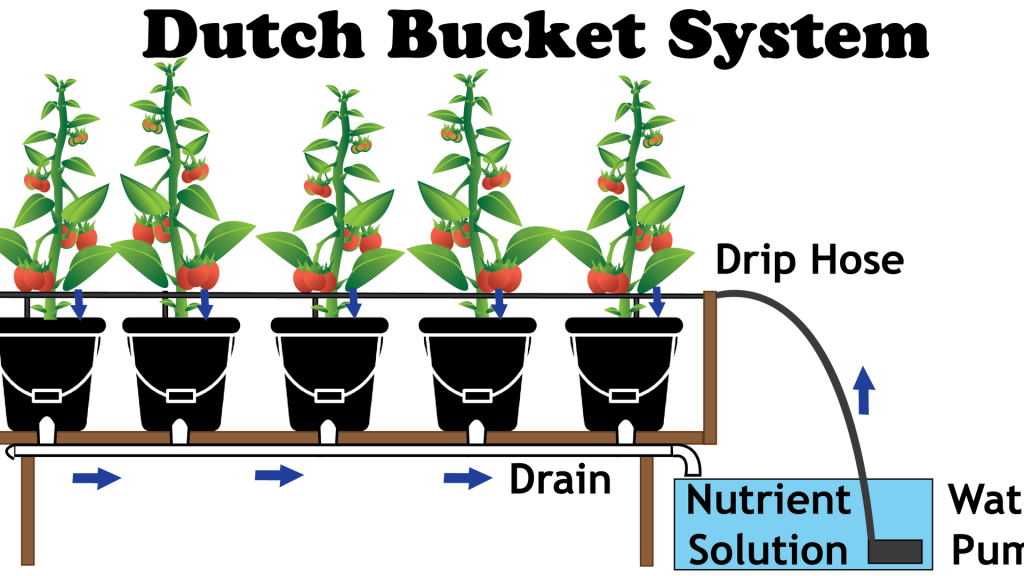
The Dutch bucket system is one of the simplest hydroponic gardening methods that comes with an easy setup and inexpensive rates. The system is especially favorable for hydroponic tomatoes, and you can use it either indoors or outdoors. If you decide to use the system indoors, ensure that your tomatoes get enough lighting. The buckets use the drip system with two buckets inside each other, and a pump to provide the crops with a nutrient solution from a reservoir.
What you need
- Buckets
- Table
- Pump
- Reservoir
- Growing media such as vermiculite, perlite, peat, expanded clay pellets, or coco coir
- Drippers
- Tubings
- Clamps
- Fittings
The buckets you choose to start with will depend on the number of tomatoes you intend to plant. Two buckets hold one plant, with the outer one being for the overflow, while the inner smaller one holds the growing medium and the plant.
Method
- Cut PVC to the length of the table based on the number of buckets you intend to use. Remember to leave space for elbow and end cap on the end.
- Place your Dutch buckets on the table and mark places for the drains. Using a drill, make 1-inch holes on the markings
- Attach the elbow and end cap using primer and PVC cement ensuring that the holes face upwards while elbow faces downwards
- Attach zip ties to hold the PVC in place by drilling holes on the table on the side of the PVC
- You can choose to use conduit clamping instead of zip ties. Run the tubing over the buckets along the middle line and fasten it in place using clamps or clips.
- Drill holes for emitters through the tubing
- Add a release valve for draining the reservoir and flushing at the end of the irrigation line
- Cut strips of the tubing and attach them to the emitters to allow centering of the irrigation to the plants
- Attach the pump and tubing end with a clamp and put it in the reservoir
- Test the system ensuring that each emitter works without any possible leaks
- Start planting your tomatoes in the growing medium
Ensure that the submersible pump is under the reservoir for more comfortable pumping of nutrients into the irrigation line to get to the roots through the emitters. The elbow on each bucket helps to drain any excess nutrient solution by returning it to the irrigation line before it goes back to the reservoir. The returning of excess nutrient solution to the reservoir makes the
Dutch bucket hydroponic system a cost-effective gardening method. If you do not want the nutrient solution to drain back to the reservoir, you can modify the setup to allow the waste to drain out. You can also add a digital timer that helps to set intervals for the watering cycle. Remember to clean the buckets in between planting session to prevent fungal and bacterial problems with the next round of crops.
[amazon bestseller=”dutch bucket”]Wrapping It Up
One of the main advantages of hydroponic tomatoes is that you can start to enjoy the yields in as early as eight weeks or even less. Growing the fruits hydroponically also provides you with different methods that you can set easily at home to enjoy high yields. The systems are inexpensive, eco-friendly, and they come with easy installations.
Even though some of the systems come with timers, you need to monitor the growth of your crops regularly and prune them to ensure you get optimal results. With this article, even if you are a beginner, I do not doubt that it will help you to get the healthiest hydroponic tomatoes with bountiful yields.
If you liked reading this article, it with a friend and fill the form below for any questions or comments.





